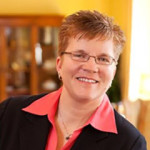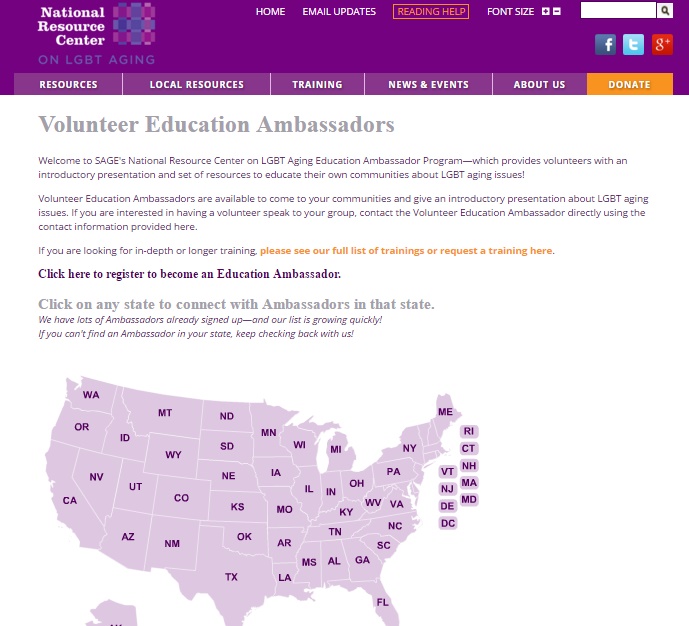by Tim Johnston, Assistant Director of Social Enterprise and Training, and Sherrill Wayland, Manager of National Projects, at SAGE.
Sometimes it feels like every time we turn around, somebody is talking about working at the grassroots level. From grassroots education and political organizing to crowdsourcing and the hive mind, focusing on grassroots engagement is certainly popular, but what does it really mean, and why is it useful?
To us, grassroots engagement means engaging and supporting a diffuse and diverse network of volunteers; in particular, folks who are outside of our professional and personal networks. Here’s an example: we manage the largest LGBT aging provider training program in the United States. It’s our job to make sure that people all across the country know the unique needs and resiliencies of LGBT older adults and best practices for working with our communities. We have a group of tireless certified trainers, but several years ago we realized that if we really want to reach as many people as possible, we needed to start working at the grassroots level. There are LGBT older adults and allies across the country in places of worship, community centers, and advocacy groups, and we can’t reach all of these groups even with our committed, but limited, training corps. So we started thinking, how can we engage folks in communities all across the country and help them become advocates within their own networks? How can we raise awareness at the grassroots level?
This led to the creation of the Volunteer Education Ambassador Program. Ambassadors register on SAGE’s National Resource Center on LGBT Aging website and are given a toolkit including a PowerPoint presentation, a script, and a set of Frequently Asked Questions. Ambassadors are encouraged to use these materials to raise awareness about LGBT aging, and when we receive requests for speakers we can pass those requests along to Ambassadors. With 160 Ambassadors in 43 states, this program has proven to be a great way for us to get the word out about LGBT aging in areas and networks that we otherwise would not have been able to reach. The leadership of a community group in San Diego, Boise, or New Orleans might not respond to our call or email about LGBT aging, but they often are interested when approached by somebody they know.
At this year’s Aging in America conference we’ll be facilitating a workshop about “Engaging Volunteers in Grassroots Awareness Building” where we will discuss the successes and challenges we’ve experienced developing this program. We will be answering questions like, what can a grassroots program accomplish for your organization? Why do people volunteer, and how can you keep them engaged? If you are going to attend the conference please stop by, and if you are interested in becoming an Ambassador please register here!

Tim R. Johnston, PhD is the Assistant Director of Social Enterprise & Training at Services and Advocacy for GLBT Elders (SAGE). He is responsible for directing SAGE’s national training initiatives, developing training curricula, and providing consulting services to both aging and LGBT service providers. He tweets at @johnstontimr.

Sherrill Wayland is the Manager of National Projects at Services and Advocacy for GLBT Elders (SAGE), where she manages the day-to-day operations of the National Resource Center on LGBT Aging (NRC) as well as working with SAGE’s National LGBT Elder Housing Initiative and other key national projects.
The opinions expressed in this article are those of the author and do not necessarily reflect those of the Diverse Elders Coalition.


